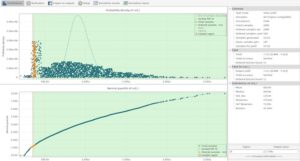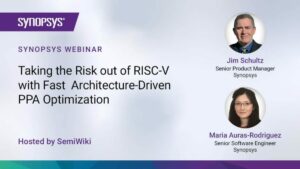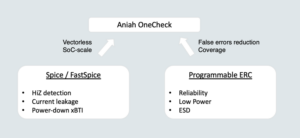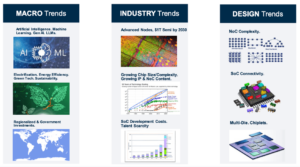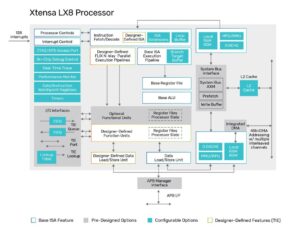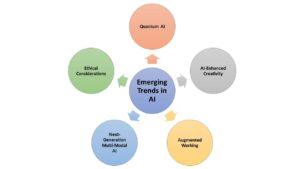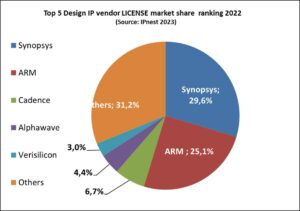
When we last saw Luc Burgun’s name in the semiconductor industry, he was CEO and co-founder of EVE (Emulation and Verification Engineering), creator of the ZeBu (Zero Bugs) hardware emulator. EVE was acquired by Synopsys in 2012.
After the acquisition, Luc moved out of EDA and became an investor. Join me as I catch up with Luc and learn more about his activities and investments and what’s interesting to him today.
What did you do once EVE became part of Synopsys?
After the acquisition, Synopsys offered me an opportunity to join the team. Even though Synopsys is a great company to work for, two years later, I craved for a change. An opportunity to join a startup designing FPGA-based market data processing systems for the financial market as CEO accelerated my departure. NovaSparks, that’s the startup’s name, is still in business and growing. Recently, we entered the APAC market opening and staffing an office in Bangkok, Thailand.
As you indicated in the intro, I’m also an investor.
Did you consider doing another startup?
I must say that the idea resonated with me at the time, but the NovaSparks opportunity cut short my planning.
Is there one investment area currently more interesting to you than others?
I am in favor of differentiation. I do not put all my eggs in one basket. Roughly speaking, I split my investments evenly in three buckets: real estate, private equities and startups. For private equities, I consult with my network of financial advisors. Over the years, I established a network of trusted advisors in the private equity community who possess a broad and deep knowledge of the market.
As for investing in startups, my focus is on French small enterprises mostly doing B2B in semiconductor, AI and financial trading.
What made you decide to invest in French startups?
Par-bleu!* I am a Frenchman (smiling).
On a more serious note, I always thought that France enjoys first-class engineers in virtue of a top-notch education taught in excellent universities. However, high-tech investment is a high-risk proposition that fits well with Silicon Valley but not with France.
Semiconductor development, and AI even more, requires rather substantial investments before reaching a return on investment, and sometimes institutional investors don’t see that. They may make an initial investment, but then they realize that it will be necessary to continue to invest and they drop out.
My success at EVE was valuable training for me and I learned a lesson. When I invest, I am in for a long run.
*English translation: Of course!
Where is your investment focus now?
So far, I invested in several high-tech startups mostly in the semiconductor business. Not all have been successful. On average, they have generated a substantial return on investment. Some of them are still in business, boosting my expectations for a higher payoff down the road.
Is there a company that stands out? Why?
Among the active startups, obviously, NovaSparks is my #1. Then I look forward to VSORA, a startup that devised an exciting and novel semiconductor architecture ideal for processing a spectrum of leading-edge AI applications. It has been implemented on two families of devices.
The Tyr family addresses autonomous driving (AD) vehicles at Levels 4 and 5; the Jotunn family delivers generative AI (GenAI) acceleration. Both applications are demanding in terms of computing power, measured in multiple Petaflops. High throughput in absolute terms is just one of several critical requirements. As critical is the efficiency of the processing cores. Today, the most popular AI computing core is the GPU, created decades ago to accelerate graphics rendering. When applied to AI algorithmic acceleration, the GPU efficiency drops dramatically. In processing AI algorithms like transformers, the GPU efficiency hovers around 1%. The VSORA architecture is 50x more efficient. Other attributes include low latency and low power consumption. For edge application, low cost is essential.
Why do you consider VSORA such an important investment?
Because I believe in their creation and in the team behind it. I have known the team since 2002 when EVE’s headquarters shared the same building with DibCom, the precursor to VSORA.
To put in perspective, my trust let me highlight the main attributes of the VSORA architecture.
The Tyr device boasts up to 1,600 Teraflops at efficiencies of 60% or more. It can process the most advanced AD algorithms like transformers and retentive nets, realizing perception stage contextual awareness in less than 20msec. The Tyr1 has a peak power consumption of only 10W.
The Jotunn8 Generative AI accelerator delivers up to six Petaflops, with efficiency in the of 50% for very large and comples LLMs like GPT-4, consuming a maximum of 180 Watts.
VSORA’s attributes have been confirmed in early customer evaluations.
That is only part of what makes a successful product. Another is the unique VSORA development software, built from the ground up along with the creation of the hardware. Porting new complex algorithms like incremental transformers onto the VSORA computing processors is a straightforward process. Users only deal with the algorithmic language, never having to bother with low level code such as RTL. The tight integration of the software with the hardware optimizes the hardware resources based on customer profiling without manual tuning and simplifies the entire design process, reducing cost and time to market.
A VSORA device can be deployed rapidly and efficiently with highly competitive overall performance.
What advice do you offer startup founders?
As we say in French, I like “to bring the stone to the building.” My advice is twofold. First, I like to coach and motivate startup founders, especially in time of stress. Second, I am available to help them by getting involved in some very specific projects when necessary. It could be business, marketing, legal, HR, Finance or even M&A. Any aspect where founders are not comfortable.
Also Read:
Long-standing Roadblock to Viable L4/L5 Autonomous Driving and Generative AI Inference at the Edge
The Corellium Experience Moves to EDA
EDA Product Mix Changes as Hardware-Assisted Verification Gains Momentum
Share this post via:- SEO Powered Content & PR Distribution. Get Amplified Today.
- PlatoData.Network Vertical Generative Ai. Empower Yourself. Access Here.
- PlatoAiStream. Web3 Intelligence. Knowledge Amplified. Access Here.
- PlatoESG. Carbon, CleanTech, Energy, Environment, Solar, Waste Management. Access Here.
- PlatoHealth. Biotech and Clinical Trials Intelligence. Access Here.
- Source: https://semiwiki.com/ceo-interviews/341029-luc-burgun-eda-ceo-now-french-startup-investor/
- :has
- :is
- :not
- :where
- $UP
- 1
- 100
- 180
- 2012
- 600
- a
- About
- Absolute
- accelerate
- accelerated
- acceleration
- accelerator
- acquired
- acquisition
- active
- activities
- Ad
- addresses
- advanced
- advice
- advisors
- ago
- AI
- algorithmic
- algorithms
- All
- along
- also
- always
- am
- an
- and
- Another
- any
- APAC
- Application
- applications
- applied
- architecture
- ARE
- AREA
- around
- AS
- aspect
- At
- attributes
- autonomous
- available
- average
- awareness
- B2B
- Bangkok
- based
- basket
- BE
- became
- been
- before
- behind
- believe
- boasts
- boosting
- both
- bring
- broad
- bugs
- Building
- built
- business
- but
- by
- CAN
- Catch
- ceo
- change
- Changes
- Co-founder
- coach
- code
- comfortable
- community
- company
- competitive
- complex
- computing
- computing power
- CONFIRMED
- Consider
- consumption
- contextual
- continue
- Core
- Cost
- could
- created
- creation
- creator
- critical
- Currently
- customer
- Cut
- data
- data processing
- deal
- decades
- decide
- deep
- delivers
- demanding
- departure
- deployed
- Design
- design process
- designing
- Development
- device
- Devices
- DID
- do
- doing
- Dont
- down
- dramatically
- driving
- Drop
- Drops
- Early
- Edge
- Education
- efficiencies
- efficiency
- efficient
- efficiently
- Eggs
- emulation
- Engineering
- Engineers
- entered
- enterprises
- Entire
- Equities
- equity
- especially
- essential
- established
- estate
- evaluations
- eve
- Even
- evenly
- excellent
- exciting
- expectations
- experience
- families
- family
- far
- favor
- finance
- financial
- Financial Market
- First
- fits
- Focus
- For
- Forward
- founders
- France
- French
- from
- Gains
- genai
- generated
- generative
- Generative AI
- getting
- GPU
- graphics
- great
- Ground
- Growing
- Hardware
- Have
- having
- he
- Headquarters
- help
- High
- high-risk
- higher
- Highlight
- highly
- him
- his
- However
- hr
- HTTPS
- i
- idea
- ideal
- implemented
- important
- in
- include
- incremental
- indicated
- industry
- initial
- Institutional
- institutional investors
- integration
- interesting
- Invest
- invested
- investing
- investment
- investment focus
- Investments
- investor
- Investors
- involved
- IT
- join
- jpg
- just
- just one
- knowledge
- known
- language
- large
- Last
- Latency
- later
- LEARN
- learned
- Legal
- less
- lesson
- let
- Level
- levels
- like
- Long
- Look
- Low
- M&A
- made
- Main
- make
- MAKES
- manual
- Market
- Market Data
- Marketing
- max-width
- maximum
- May..
- me
- measured
- mix
- more
- more efficient
- most
- Most Popular
- mostly
- moved
- moves
- multiple
- must
- my
- name
- necessary
- Nets
- network
- never
- New
- note
- novel
- now
- of
- offer
- offered
- Office
- on
- once
- ONE
- only
- opening
- Opportunity
- Optimizes
- or
- Other
- Others
- out
- over
- overall
- part
- Peak
- perception
- performance
- perspective
- planning
- plato
- Plato Data Intelligence
- PlatoData
- Popular
- possess
- Post
- power
- precursor
- private
- Private Equity
- process
- processing
- processors
- Product
- profiling
- projects
- proposition
- put
- rapidly
- rather
- reaching
- Read
- real
- real estate
- realize
- realizing
- recently
- reducing
- rendering
- Requirements
- requires
- Resources
- return
- road
- roughly
- Run
- same
- saw
- say
- Second
- see
- semiconductor
- serious
- several
- shared
- Short
- Silicon
- Silicon Valley
- simplifies
- since
- SIX
- small
- Software
- some
- sometimes
- speaking
- specific
- Spectrum
- split
- staffing
- Stage
- stands
- startup
- Startups
- Still
- STONE
- straightforward
- stress
- substantial
- success
- successful
- such
- Systems
- taught
- team
- terms
- Thailand
- than
- that
- The
- their
- Them
- then
- There.
- they
- this
- though?
- thought
- three
- throughput
- time
- to
- today
- Trading
- Training
- transformers
- Translation
- Trust
- trusted
- two
- unique
- Universities
- users
- Valley
- Valuable
- Vehicles
- Verification
- very
- via
- viable
- was
- we
- WELL
- What
- when
- WHO
- why
- will
- with
- without
- Work
- years
- you
- Your
- zephyrnet
- zero

